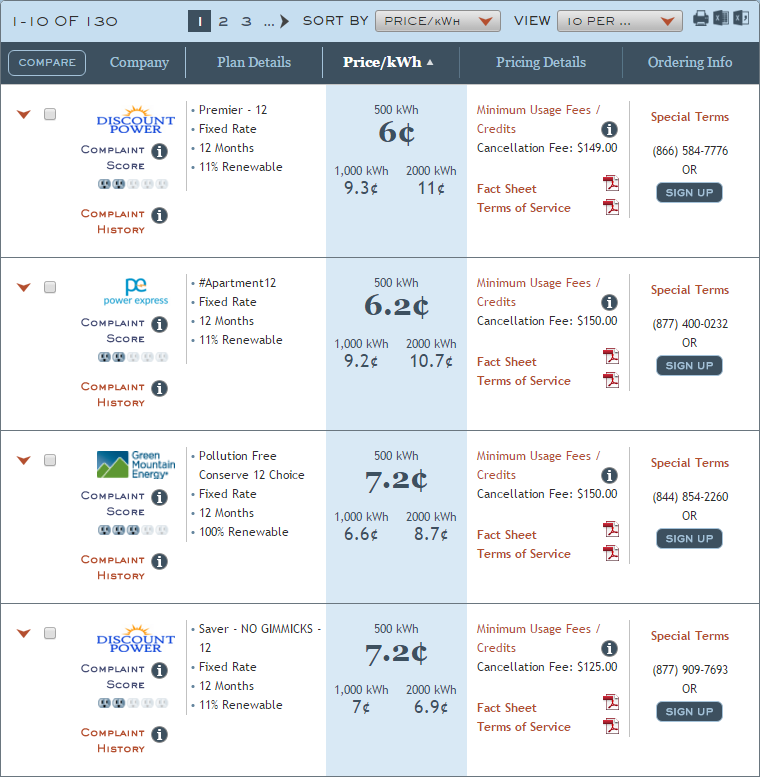In Texas (and probably some other places, too) you have to choose your power provider. A handy website is provided for you to do this. It's called Power to Choose. Here's a handy way to figure to which service you should choose to get the lowest bill.
I'm going to keep things simple and only deal with the fixed-rate plans. I'm going to make the assumption that your energy usage is between 500 and 2000 kWh/mo. I'm also going to assume that all of the fixed-rate plans have prices that are linear within the 500 to 1000 and 1000 to 2000 kWh regions.
1) Determine you current power usage
Check your bills over the past twelve months. Find your average energy usage over those twelve months. For example, my average energy usage was E_avg = 684 kWh/mo. This puts me in the 500 to 1000 kWh/mo range. My examples below will assume you're in this range too. If you're not, then just replace the numbers with those for 1000 and 2000 kWh/mo.
2) Calculate your cost per kWh
The plans on Power to Choose are tricky. Some providers have really low costs at 500 kWh/mo, but they quickly skyrocket as you approach 1000 kWh/mo. The trickiest part is that while your bill each month will follow this linear trend, your cost per kWh will not. This means that you can't just choose the plan with the lowest cost per kWh for 500 or 1000 kWh/mo.
Use the formula,
(R_500*500+(E_avg-500)/(1000-500)*(R_1000*1000-R_500*500))/E_avg
Where R_500 is the price/kWh at 500 kWh, R_1000 is the price/kWh at 1000 kWh, and E_avg is your average energy usage each month.
For example, using the first provider in the image (R_500=6¢, R_1000=9.3¢), and my average energy usage over the last year (E_avg=684):
(0.06*500+(684-500)/(1000-500)*(0.093*1000-0.06*500))/684
(30+(184)/(500)*(93-30))/684
(30+0.368*63)/684
(53.184)/684
$0.078/kWh
7.8¢/kWh
I applied this formula in Excel to the first page of providers (sorted based on PRICE/kWh), and I found that the third option was the cheapest option for me. The first two options look the cheapest upon first glance, but the slope at which their rates increase is positive whereas the third plan has a negative slope. At a certain point past 500 kWh, the third plan becomes cheaper than both of the first two plans. (I'll leave it as an exercise for the reader to determine the exact point at which this occurs.)
Here are the costs per kWh at a usage of 684 kWh/mo for the plans in the image if you wish to implement my formula in Excel and check it against what I've already done:
| Company | Plan | Rate @ 684 kWh (¢/kWh) |
|---|---|---|
| Discount Power | Premier - 12 | 7.8 |
| Power Express | #Apartment12 | 7.8 |
| Green Mountain Energy | Pollution Free Conserve 12 Choice | 6.9 |
| Discount Power | Saver - NO GIMMICKS - 12 | 7.1 |
Photo by João André O. Dias
